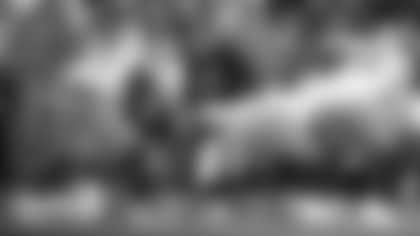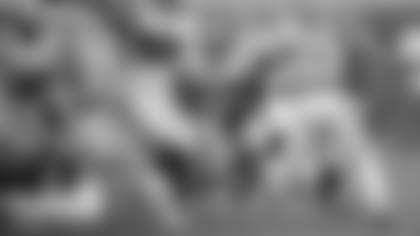*Three Giants writers discuss areas to build on as the team concluded the first half of 2017: *
With a 1-6 record at the bye week, the Giants will take some time away and do some self-scouting. They will return in a week to gear up for the remaining schedule, which includes five games against teams currently above .500.
"We have to go back, we have to take a look at the first seven weeks, evaluate us schematically, evaluate ourselves schematically -- the personnel, coaching, everything," coach Ben McAdoo said after Sunday's 24-7 loss at home to the Seattle Seahawks. "Take a look at it, find a way to get our bodies back -- that will be big for the second half -- and then come back and prepare to win a ball game."
In this week's Cover 3, our writers talk about what the team needs to build on and improve for the second half:
JOHN SCHMEELK
The Giants need to re-ignite the running game. With the injuries at wide receiver, running the ball will be a necessity in the Giants' new formula for winning. Both Eli Manning and Ben McAdoo spoke about it last week: the team will need to run the ball, protect the ball and convert on third downs if they are going to score enough points to win games. Against the Seahawks, the Giants averaged only 2.7 yards per carry. There were very few negative plays, which allowed the Giants to have some third-and-manageable distances in the first half, but they could not convert them consistently.
The Giants failed on a third-and-six, third-and-two, and third-and-one in the first half. On the third-and-shorts, the running game needs to be able to convert. Combine those failures to convert with the defense's own struggles on third down and you wind up with Seattle winning the time of possession battle 35:26 to 24:34. It's very simple. If the Giants can't run the ball consistently in the second half of the season, they will struggle to sustain drives and score points.
DAN SALOMONE
While there was a line at the MRI machine for the Giants' four injured wide receivers a few weeks ago, there was an equally long one forming to take their spots. Such is the nature of the NFL. Roger Lewis was the last man standing; Travis Rudolph and Ed Eagan were promoted from the practice squad; and Tavarres King was brought back after showing flashes late last season. This was their time to prove their mettle. But in two games since the offense suffered an almost unthinkable string of injuries, Eli Manning has completed seven passes to wide receivers for just 67 yards and no touchdowns.
Odell Beckham Jr. isn't coming back. Brandon Marshall isn't coming back. Dwayne Harris isn't coming back. Sterling Shepard, on the other hand, likely will after the bye week as he wasn't ready yet this past Sunday. He'll need to lead the charge along with rookie tight end Evan Engram, but there is a golden opportunity for other guys to step up in the passing game. The offense certainly needs them.
LANCE MEDOW
When you look at the first seven games of the season, one of the most consistent issues for the Giants has been not getting off the field on third down. Opponents have converted 42 of 103 (41 percent) third-down opportunities against the Giants' defense this season. That puts New York 25th in the NFL. Four (Cowboys, Lions, Chargers, Seahawks) of the Giants' first seven opponents have converted 44 percent of their third downs or better with just two (Bucs, Broncos) below 30 percent. The inability to get off the field on third down, regardless of the distance, has led to lengthy drives for the opposition, which ultimately wears down the Giants' defense. New York has won time of possession in only two of its seven games, and five of its seven opponents have held the ball for over 30 minutes. Time of possession is also tied into offensive production, and through seven games, the Giants have converted just 30 of their 92 third-down opportunities (33 percent). That has to improve as well, especially in short yardage situations. Case in point, Sunday against the Seahawks, the Giants were 2 of 12 on third down but six of those downs were for six yards or less and they only converted one of those six downs.
Executing on third down involves a variety of factors on offense, such as running the ball effectively and receivers making plays. On defense, that means stopping the run, avoiding missed tackles and showing discipline in assignments. If the Giants can improve their third-down efficiency on both sides, it can go a long way in helping many other facets of the team in the second half of the season.
















